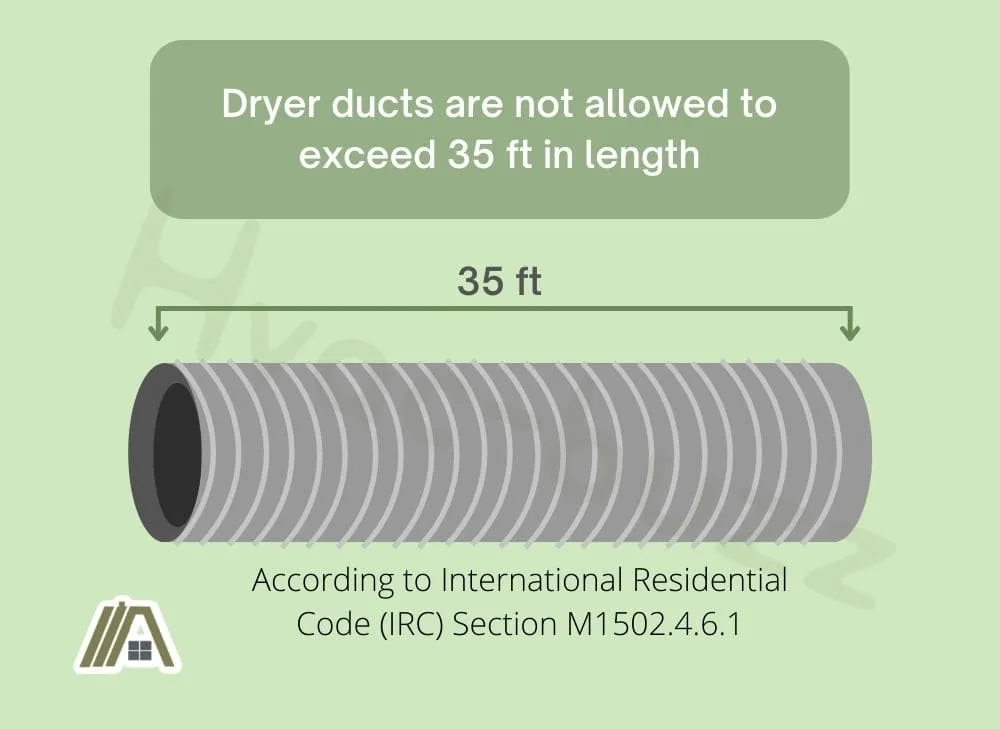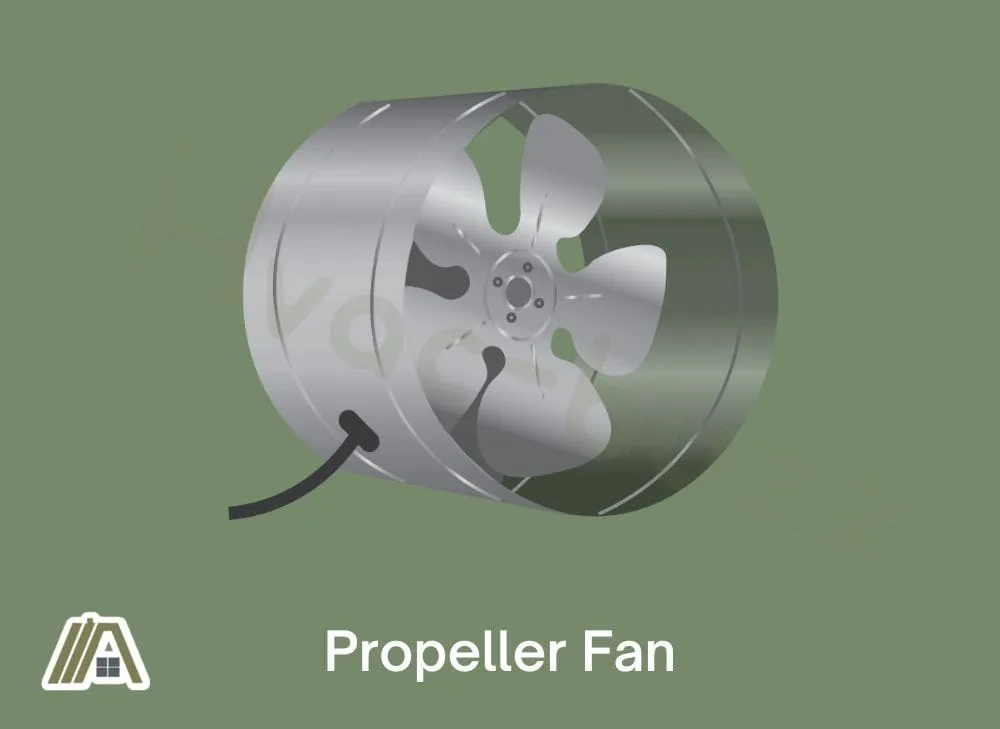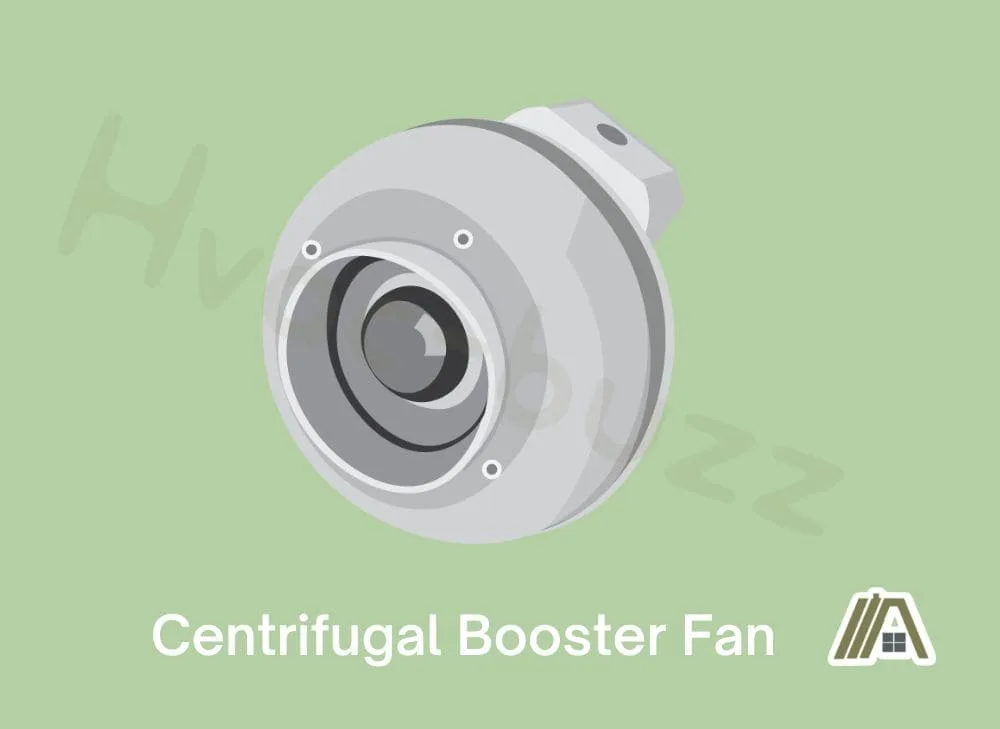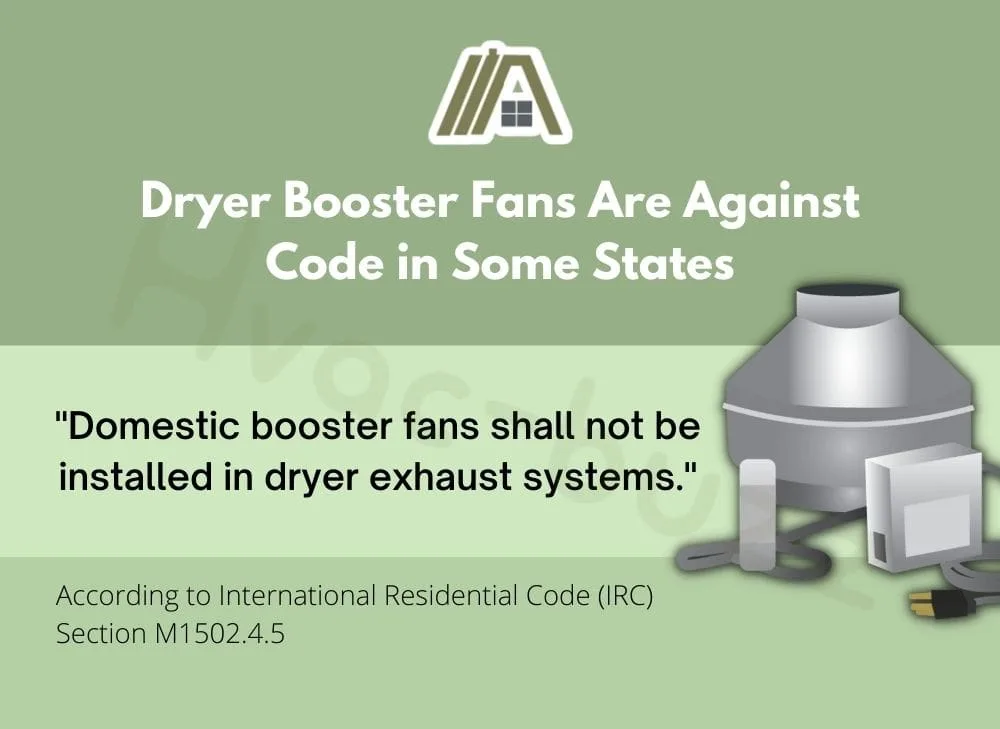When Is It Needed?
Efficient dryer exhausting should be the destination of every individual who owns a dryer. The exhaust that these appliances create is hot and humid as well as carries lint in addition to gases. None of these things are proficient for the inside of your dwelling.
Dryer duct booster fans can effectively amend your dryer’sec performance nether certain conditions, although they are non permitted to live used as of the nigh recent update to the edifice codes applicable inward almost American states.

Dryer duct booster fans are needed when the dryer duct measures longer than 25 ft. Most domestic dryers cannot generate sufficient exhaust pressure to ensure the hot air, wet, as well as lint are fully expelled through this entire duct length to the exterior.
Dryer Ducting Has a Maximum Length
Dryer ducts are not allowed to transcend 35 ft inward length, assuming the ducting runs direct all the mode. This is ready out inwards the International Residential Code (IRC) Section M1502.four.half dozen.i.

This maximum length is based on how far dyer exhaust tin locomote earlier the airflow charge per unit reduces to the signal at which the exhaust is no longer venting from the ductwork properly.
As it is highly unlikely that your dryer ducting will have no bends inwards it, the IRC has provided a tabular array inward this same department that equates an elbow of a sure radius, angles, too surface (mitered or smooth) to a certain direct length of ducting.
For example, a single 45° elbow amongst a half-dozen″ radius is the equivalent of i ft of directly ducting, then your maximum allowable length decreases from 35 ft to 34 ft amongst the add-on of a unmarried one of these elbows.
The argue why elbows cut down the allowable length is that bends cut the airflow rate, significant that the exhaust will not be able to locomote the full 35 ft well plenty to be vented outside properly.
Should the ducting pass 35 ft, using a ventless dryer is a expert option worth considering as no ducting is required.
Dryer Booster Fans Are Used for Long Duct Runs
Dryer booster fans are used inwards ducting that extends between 25 ft in addition to 35 ft inward straight length.
The reason why booster fans are used is that significant force per unit area is required to blow the dryers’ exhaust air through ducts inward this length range, as well as fifty-fifty though it falls within the allowable range, these ducts are non going to be as efficient as possible.
Furthermore, whatsoever piffling outcome similar lint accumulation or a faulty backdraft damper is going to have more of an affect on the duct runs if at that place is no “boost” to the airflow.
How Do Booster Fans Work?
Booster fans increment the airflow rate. They follow two basic designs:
- The propeller-type booster fan fits within the dryer duct, alongside the fan housing forming role of the ducting organisation.
- A centrifugal booster fan motor fits exterior the duct spell the fan section is integrated into the ducting.
The unit consists of an inlet connected to the duct facing the dryer. The air, partially assisted past the dryer, is sucked into the booster past a rotating fan blade (driven by an electrical motor). The rotating fan then pushes the air out of the outlet connected to the pop off side of the duct at a greater speed than it had when entering.
Basically, the fan gives the air an extra boost, which is why it is called a booster fan.
Most mod booster fans are fitted with a pressure relay or switch that detects when the dryer is turned on or off. When the dryer turns on, the fan turns on too alone turns off two to iii minutes later on the dryer has stopped running.
The fan keeps running later the dryer has stopped to ensure that all the moisture, warm air, lint, together with carbon monoxide (gas dryers) take been expelled from the duct.
Older booster fans are activated manually when the dryer is inwards role. This is not the best solution as it is slowly to forget to turn the booster fan on or off.
Types Of Fans
Propeller Fan
Propeller-type fan blades are unremarkably used inwards booster fans where blow-through or inline-type fans are needed. Depending on their intended function, propeller fans are available inward many shapes as well as sizes.
The propeller-type fans are bully for role where big volumes of air involve to live moved at depression force per unit area.

Centrifugal Fan
The centrifugal fan uses a blade that tin can best be described equally a squirrel cage. This blade blueprint draws air into the rotating cage together with expels it at 90 degrees to the fan. This booster fan is least prone to fouling upward alongside lint due to its blueprint.
The centrifugal fans are fitted into the ducting inwards place of a xc-grade bend.

Problems Avoided past Using Booster Fans
Ineffective Venting of CO With Gas Dryers
Gas dryers free carbon monoxide, which is expelled out of the dryer duct nether normal operating conditions along alongside warm air, moisture, lint, as well as dryer debris.
When the exhaust duct airflow is insufficient, this potentially deadly gas can remain inwards the duct and leak into the abode.
Moisture Collection
Sufficient airflow inside the dryer duct takes care of the moisture exhausted from the dryer during the drying procedure. When moisture accumulates in the duct, the potential of water leaking out onto a ceiling, wall, or flooring, causing H2O damage, is real existent.
Additionally, a H2O leak tin drive a H2O pool on the floor, which is a pregnant slipping chance.
Potentially more than serious is the fact that mold readily grows where in that location is excessive moisture.
Lint Build-Up
The accumulation of lint within a dryer duct is a potentially severe problem. Keeping the exhaust duct airflow stiff reduces the possibility of the lint settling within the vent or the dryer’second electric components.
Lint is a highly flammable fiber that, when allowed to accumulate, packs together too forms a blanket-similar roofing within the duct. This farther reduces the charge per unit of airflow, resulting inwards fifty-fifty more than lint deposition as well as the initiation of a bad bike.
Lint readily gets inside the dryer’s electrical components if the exhaust airflow is restricted. Many dryer components oestrus upward during the drying procedure. Add about lint on the incorrect components, similar the chemical element, too you have a genuine burn down take a chance.
Long Drying Time
Dryer booster fans aid inward shortening the drying time. The booster fan sucks the air out of the dryer, reducing the force per unit area on the dryer to expel the exhaust air and wet. The additional airflow improves the dryer’second efficiency and potentially saves you lot some money.
Exhaust Duct Maintenance
Good airflow through the dryer duct by the fitment of a booster fan significantly reduces the possibility of lint wet or debris accumulating within the duct. A cleaner duct means less maintenance is required inward price of cleaning the duct.
Dryer Booster Fans Are Against Code inward Some US
It is advisable to cheque your local codes before installing a booster fan, as many states do not let their use.
In the IRC Section M1502.four.5, it says:
“Domestic booster fans shall not be installed in dryer exhaust systems.”

Dryer booster fans are non approved inwards the IRC (so, they are illegal) due to the increased burn down hazard. Booster fans that make not plow off when a burn down occurs tin draw the flames into the dryer duct and spread the burn down into other parts of the house.
Sources
https://www.nachi.org/dryer-vent-safe.htm
https://www.aerovent.com/fan-testing-services/ul-705-rubber-testing/
https://www.ccohs.ca/oshanswers/prevention/ventilation/fans.html

Comments
Post a Comment